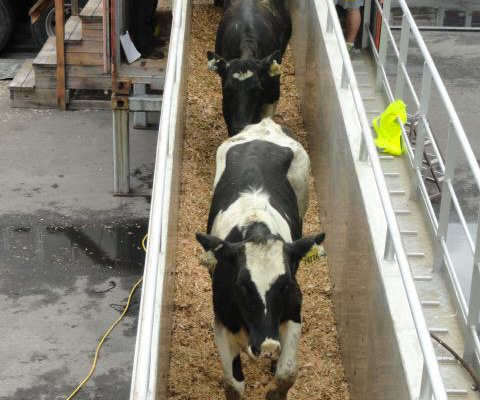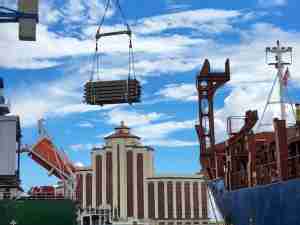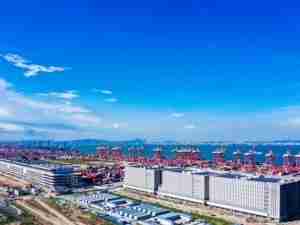Port of Olympia recently caught up with Holly Irish, DVM, Veterinary Medical Officer, and Cattle Export Coordinator, U.S. Department of Agriculture's Animal and Plant Health Inspection Service, to learn how the USDA partners with the Port of Olympia Seaport on agricultural product shipping.

USDA's mission is to protect and promote American agriculture. As part of that mission, my agency protects the health of the country's animals, plants and natural resources. My team deals with veterinary issues - protecting livestock and poultry from disease and helping ensure safe international trade of animals and their products.
What is your process from the time the cattle arrive until the time they leave the Port of Olympia?
Port veterinarians are there to help agricultural trade run smoothly while protecting the health of our country's herds and flocks. My main role is to ensure that animals being exported through the Port are healthy and fit for a long international trip by sea.
I inspect every vessel to make sure they meet strict space and safety guidelines. The guidelines help make the voyage both safe and comfortable for the animals. Before any animals can be loaded, they arrive at an export inspection facility, where they are inspected for signs of illness and injury. Next, they travel to the port, where they are loaded onto the vessel. USDA staff is always present during loading to ensure animals are not injured during the process. After loading, we walk each of the vessel's decks to make sure the animals are settled in and ready for their trip.
Is there a benefit to having a USDA facility near a seaport?
The export inspection facility in Washington State is less than an hour's drive from the Port of Olympia. This relatively short trip is better than a longer trip, because it is safer and more comfortable for the animals. All animals being exported must have a period of rest at the export inspection facility before they can go to the Port. Together, the rest period and the short trip helps ensure the animals are well-rested, fed and ready to load on arrival.
Can you tell us about your working relationship with the Port of Olympia and how they have been effective in the safe shipment of cattle?
The Port of Olympia staff have worked well with USDA and are enthusiastic about making the process a smooth experience for everyone involved.










